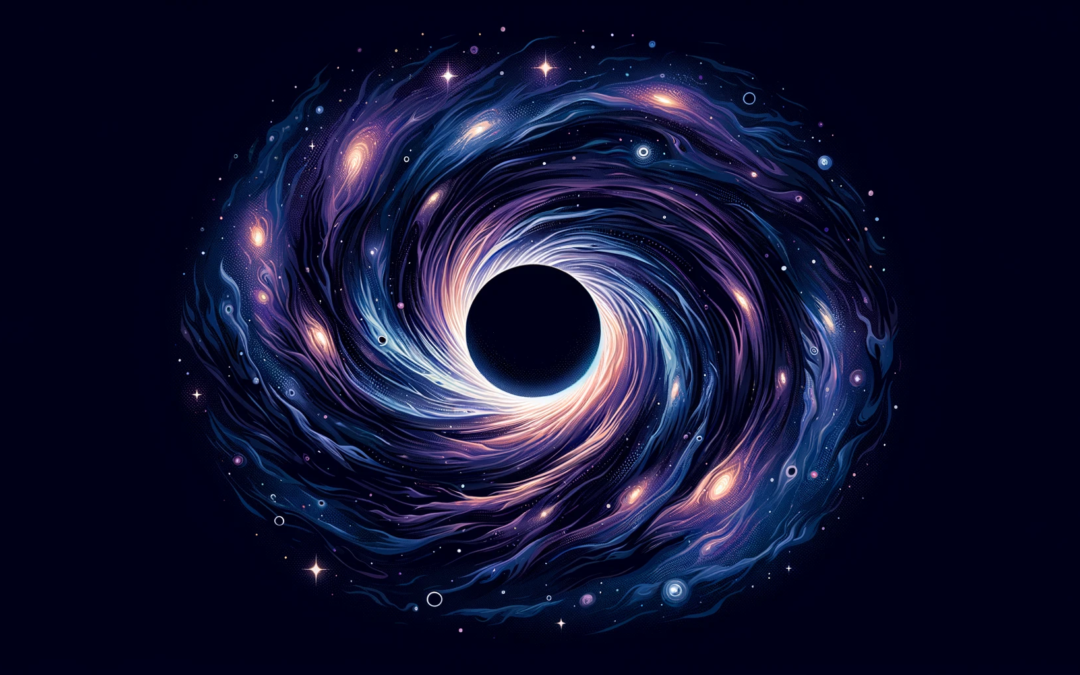In the vast expanse of the cosmos, black holes stand as some of the most mysterious and awe-inspiring phenomena. These enigmatic entities, particularly supermassive black holes, sit at the heart of galaxies, playing a pivotal role in their formation and evolution. In this exploration, we delve into the symbiotic relationship between black holes and galaxies, unraveling the cosmic dance that dictates the lifecycle of these colossal structures.
The Influence of Black Holes on Galaxy Formation and Evolution
The story of a galaxy’s life is intricately tied to the black hole at its center. Virtually all massive galaxies, including our own Milky Way, harbor a supermassive black hole, whose mass can range from millions to billions of times that of our Sun. These central black holes are not just passive spectators; they actively shape the destiny of their host galaxies.
The growth of supermassive black holes, marked by the release of immense energy, powers the luminous quasars and other active galactic nuclei. Interestingly, even a fraction of this energy, when absorbed by a galaxy, has profound effects. It can regulate star formation by heating and ejecting the surrounding gas, shaping the galaxy’s future. This interplay is crucial in understanding why large elliptical galaxies have fewer young stars and less cold gas compared to their spiral counterparts.
The relationship between a galaxy and its supermassive black hole is a cosmic conundrum, one that challenges our understanding of galactic dynamics. Despite the vast size difference, the galaxy and its black hole seem to grow in tandem, indicating a deep, underlying connection.
Galactic Dynamics and Supermassive Black Holes
One of the most fascinating aspects of this relationship is the influence of supermassive black holes on the dynamics within their galaxies. These black holes exert control over their immediate surroundings, affecting the central region of the galaxy. However, their gravitational influence extends beyond, impacting the galaxy at large.
A supermassive black hole typically influences only a few light-years around it, yet the correlation between its mass and the galaxy’s spheroid component – the central bulge – is unmistakable. This relationship suggests that the growth of the black hole and the galaxy are interconnected, a phenomenon that continues to intrigue astronomers and astrophysicists.
Simulating the Universe: Insights into Black Hole-Galaxy Co-evolution
To unravel the complexities of black hole-galaxy co-evolution, astronomers turn to sophisticated computer simulations. These simulations, such as ROMULUS, allow researchers to observe the lifecycle of galaxies and their black holes from inception to maturity. By simulating thousands of galaxies in various environments, these models offer insights into how black holes and galaxies influence each other’s growth and activities.
One key finding from these simulations is the self-correcting nature of the black hole-galaxy relationship. If a black hole is too large or too small for its galaxy, the availability of gas and dust within the galaxy adjusts the growth rate, ensuring a balanced development. This finding offers a clearer picture of how galaxies and their central black holes evolve together, closely coupled regardless of external factors.
Current Research and Future Prospects
The field of black hole research is dynamic, with ongoing studies and future missions poised to deepen our understanding. The James Webb Space Telescope, along with future ground-based telescopes, promises to offer new insights into the early universe’s galaxies and their black holes. Observing galaxies at different stages of evolution and under various conditions will help confirm and refine our current models and theories.
The exploration of galaxies with extremely active black holes or dwarf galaxies with unusually heavy black holes could provide further evidence to support the co-evolution model. These studies will not only enhance our understanding of black holes and galaxies but also offer a glimpse into the fundamental processes that shape our universe.
Key Takeaways
The cosmic dance between black holes and galaxies is a testament to the intricate and interconnected nature of our universe. As we continue to explore and understand these celestial giants, we not only uncover the secrets of distant galaxies but also gain insights into the very mechanisms that govern the cosmos. The study of black holes and their role in galactic evolution is not just about understanding the distant and the vast; it’s about unraveling the mysteries of existence itself.

